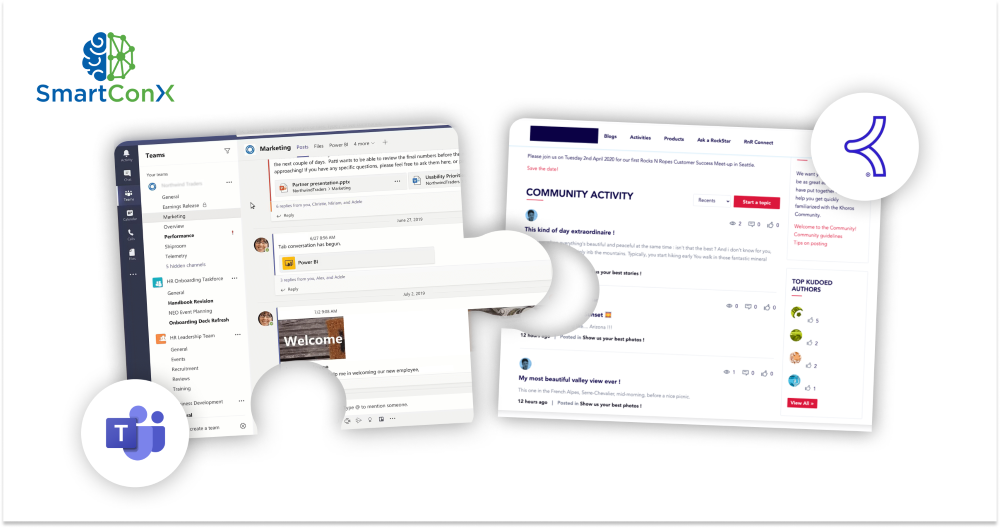6 reasons your company needs an iPaaS

As your company deploys and onboards an increasing number of applications, they create data silos that hinder your organization’s ability to effectively scale, and they hamper the payoff of your investments in content, data and people. Data silos represent one of the biggest obstacles to enterprise agility, and one of the biggest barriers to delivering optimal value to customers.
Data silos are also detrimental to the customer experience (CX), because they force customers, partners and other external and internal stakeholders to jump in and out of different online platforms on a hunt for information. I call this “porpoising” between applications, systems and repositories.
An integration-platform-as-a-service (iPaaS) solution is ideal for connecting SaaS applications and on-premises systems, creating seamless integrations between disparate repositories and harmonizing the user experience (UX).
This capability was born out of the frustration of building one-off integrations between an increasing number of different environments, often recreating the same capabilities and code over and over again. And we know that with each line of code comes an added burden of supportability.
Many of us have been in the situation where support costs and resources (“running the business”) overwhelm the investments in new capabilities and functionality (“changing the business”). This is not only frustrating, but it distracts the organization from focusing on initiatives that move the needle and positively impact the customer/user experience. Hence the need to adopt platforms, methodologies and capabilities that enhance extensibility and scalability.
iPaaS leverages the same code base to connect a wide variety of applications and systems to one another. This reduces costs, optimizes utilization, and quickens time to value by creating a single environment to support a broad set of integrations.
Additionally, it spares IT teams the trouble of building custom integrations in-house, which are costly and time-consuming, not to mention the fact that they add to the support burden and divert resources away from creating a positive customer experience.
iPaaS basics
An IPaaS is a cloud-based platform that enables integrations between applications and facilitates flows of data and content across different platforms. Generally speaking, an iPaaS will perform the following functions:
- Map data and content between applications, even if the data format isn’t consistent
- Transform data to make it more valuable to other systems
- Transfer pieces of data and content between API endpoints
- Perform quality assurance of the data it receives
- Maintain API governance specifications such as authentication and authorization
6 key benefits of an iPaaS
An iPaaS automates the foundational elements of systems integrations so the unification of platforms becomes much more efficient, streamlined and cost-effective, with a common framework for administration across the integrations. Here we outline six key benefits to using an iPaaS.
1. Extensibility and time to value
Building integrations from scratch requires the development of a host of foundational modules and capabilities (event management, notifications, error handling, authentication, etc.) before you even get to the development of the unique capabilities of the application integration itself.
When you multiply that foundational work by dozens or hundreds of integrations, the cost and resource burden can quickly get out of hand. iPaaS essentially eliminates that work and provides a platform that enables configuration, without requiring additional development.
Moreover, with pre-built “connectors,” the time to value can be minimized even further. But even where a pre-built connector is not available, an iPaaS will expedite the development of a custom integration based on unique requirements.
2. Improved manageability and supportability
An iPaaS centralizes the foundational elements of all of your various systems integrations on a unified platform, which greatly facilitates integration configuration and management. Traditionally, each integration requires a distinct connector, and a typical enterprise may have thousands of disjointed connectors in place, most likely written in different formats and programming languages, and supported by different protocols.
Building integrations on a single iPaaS platform harmonizes the integrations and makes them much easier to manage and support, in addition to reducing the points of failure and creating a single pane to administer the integrations across the enterprise.
3. Improved experience for customers and employees through virtual consolidation of data and content
With an iPaaS, employees and customers no longer need to jump (“porpoise”) between different applications to find the right content. The content can be contextually presented in the application or repository in which the user chooses to be.
With the most advanced iPaaS capabilities, the content can be bi-directionally or even multi-directionally syndicated across the iPaaS so that content not only can be surfaced across many environments, but can also allow users to engage with each other through threaded discussions and comments.
This means that users are not only exposed to content where they choose to be, but they can also connect to others that they may have otherwise never discovered since they are on different platforms.
This is a powerful benefit that not only optimizes UX and CX, but also protects the company’s technology investments. With all the money that goes into developing and publishing content, it is a waste for it to go unconsumed simply because stakeholders can’t find it.
4. Improved experience for customers and employees through notifications, search, and reporting
With centralized alerts and notifications, employees can respond to customers faster. Moreover, the IT team is able to identify and respond to issues more quickly if there is an issue with a source system, thanks to the centrally managed console for administration, audit logging, and notifications of all the integrations supported by the iPaaS.
Additionally, with cross-platform analytics and reporting, the team is better positioned to identify and isolate issues more quickly to better serve all stakeholders.
5. Improved security framework using authorization, authentication, and user management
An iPaaS creates a consistent security framework that protects your data by managing user access through authorization and authentication. Numerous one-off integrations across the enterprise create greater exposure to security risks and points of failure.
Moreover, security threats are much harder to isolate due to the dispersed nature of the integrations, as well as the differing ways in which they were deployed. With an iPaaS, you have a consistent administrator console that enables the configuration and maintenance of the integrations. The centralized administrative control greatly strengthens your security framework.
Additionally, an iPaaS offers robust fraud detection and alerts you of any system intrusions. An iPaaS is compliant with important data security and privacy requirements such as SOC2, HIPPA, and GDPR. These increased security standards allow you to meet your customers’ modern-day high expectations when it comes to personal privacy.
6. A truly integrated application ecosystem
An iPaaS provides out-of-the-box connections, which allow you to connect the apps’ API endpoints via authentication. Compared with distinct custom integrations, this process is far less time-intensive and costly, adding profit back to your organization’s bottom line.
With an iPaaS, connecting new apps is as easy as snapping them into place. Moreover, application server and database management is much less complex. The iPaaS engine also automates tedious tasks like setting up event triggers and mapping fields.
iTalent's iPaaS can support your business goals
iTalent Digital’s SmartConX is a state-of-the-art, AI-enabled iPaaS that comes with dozens of pre-built connectors ready to snap into place, depending on your specific needs.
For example, share content seamlessly and multi-directionally across online communities with CommunityConX, include users on social platforms like Reddit and Facebook in your support forum conversations using SocialConX, surface content from various repositories with ContentConX, allow subject matter experts to engage with online support forums without leaving Teams or Slack using CollaborationConX, automate content translation with LanguageConX, and more.
Contact us at smartconx@italentdigital.com to explore how SmartConX can automate and streamline integrations at your organization.
You may also like:
10 steps to a ubiquitous online community
How Autodesk integrated Facebook without increasing costs



